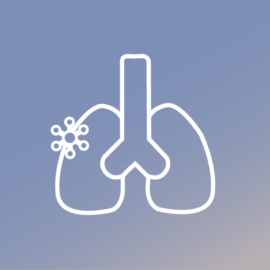About Pneumococcal Disease
Pneumococcal disease is an illness caused by infection with the bacterium (‘germ’) Streptococcus pneumoniae.
These germs often live harmlessly in the throats of healthy people, particularly children, without causing illness. However, if they spread to other areas of the body, they may cause potentially deadly illnesses.
Pneumococcal disease is a leading cause of serious illness among Australian children under two years of age and persons over 70 years of age. It is a frequent cause of death in the elderly. The rates are higher among Aboriginal and Torres Strait Islander children, especially in central Australia.
Pneumococcal infection is an important and common cause of middle ear infection, but may also cause pneumonia, meningitis (infection of the lining of the brain), and septicaemia (‘blood poisoning’).
Pneumococcal meningitis and pneumococcal septicaemia are both forms of ‘Invasive Pneumococcal Disease’ (IPD).
There are at least 90 different strains of Streptococcus pneumoniae. Some of these are regular causes of IPD in Australia. Immunisation against these strains greatly reduces the risk of disease. Vaccines are available to help protect against the strains that cause most disease.
Pneumococcal Disease Symptoms
Invasive pneumococcal disease – particularly septicaemia and meningitis – is a very serious illness.
Almost all people with IPD (children and adults) will be obviously sick, and in need of urgent medical care.
Streptococcus pneumoniae can cause a range of illnesses, depending on which part of the body is infected. These include:
- Sinusitis – infection of the sinuses (air-filled cavities in the face). Symptoms include aching face, blocked nose, yellow-green nasal mucus and headache;
- Otitis media – middle ear infection. Symptoms include painful ear, hearing loss, high temperature, nausea and vomiting;
- Bacteraemia – bacteria invade the blood. Symptoms include fever, headache and muscular aches and pains. This is a very serious condition;
- Septic arthritis – joint infection. Symptoms include joint pain, swelling and reduced movement of the joint;
- Osteomyelitis – bone infection. Symptoms include bone pain, reduced movement of the affected part and fever;
- Pneumonia – lung infection. Symptoms include fever, cough, chest pains and breathing problems, such as shortness of breath;
- Meningitis – infection of the lining around the brain and spinal cord. Symptoms may include high fever, headache, stiff neck, nausea and vomiting, and sometimes coma. Pneumococcal meningitis is extremely serious and has a high death rate.
How Pneumococcal Disease Spreads
The Pneumococcus bacteria usually lives harmlessly in the nose and throat of healthy people, especially young children (up to half of young children in winter). In some people (particularly those at increased risk), the Pneumococcus bacteria invades the body or blood stream causing pneumococcal disease.
The pneumococcal germ passes from one person to another in droplets from the upper throat or nose. These get spread directly when someone with the germ in their throat sneezes or coughs close to someone else. It may also be possible to spread it by kissing and from contaminated objects, such as toys.
Most of the time, this doesn’t cause any illness. However, vulnerable people may develop pneumococcal disease. The immune system is unable to keep the bacteria in check, which then multiply out of control and spread to other areas of the body.
Pneumococcal disease occurs most commonly in the colder months in Australia. Young children who have higher rates of carriage and don’t always cover their mouth when sneezing or coughing are more likely to pass the bacteria on to the elderly or those with specific risk factors.
When people do get sick with pneumococcal disease, it is rarely possible to be sure where or how they caught their infection.
Pneumococcal Disease Complications
The World Health Organization (WHO) states that pneumococcal disease is the world’s number 1 vaccine-preventable cause of death among infants and children younger than 5 years of age.
Pneumococcal disease is a leading cause of serious illness among Australian children under two years of age and persons over 70 years of age. The rates are higher among Aboriginal and Torres Strait Islander children, especially in central Australia.
Immunisation can reduce the risk of infection, especially in young children, where it is on the routine vaccine schedule.
Pneumococcal disease is also an important cause of pneumonia in adults 70 years of age or over. Older people are especially at risk of death from this disease. It is estimated to kill around one million people worldwide every year.
While pneumococcal disease can occur at any time, infections seem to be more common during winter and spring. Young children, older people and people with impaired immune systems and chronic diseases are among the most susceptible.
Pneumococcal Disease Prevention
Immunisation can reduce the risk of infection, especially in young children, where it is on the routine vaccine schedule.
There are at least 90 different strains of Streptococcus pneumoniae. Only some of these are regular causes of IPD in Australia. Immunisation against these strains greatly reduces the risk of disease. Vaccines are available to help protect against the strains that cause most disease.
Pneumococcal Disease Treatment
Treatment is urgent, and involves an antibiotic, usually given intravenously, and hospital care, sometimes intensive care.
Treatment options for pneumococcal disease include:
- Antibiotics such as penicillin
- Pain-relieving medication
- Plenty of fluids
- Rest
- Hospital admission in severe cases – for example, meningitis.
